1. Ugly Sweater Holiday Parties

You’d think ugly sweater parties have been a mid-December staple for generations, but the trend took off—ironically—around the early 2000s. People turned tacky knits into novelty heat-beaters, especially with the rise of e-commerce making themed clothing easy to find. Locals act like it’s a classic, but this cozy kitsch craze is only two decades old. It’s on the list because it demonstrates how parody-based traditions can feel venerable—and festive—really fast.
Now, everyone hosts or attends one, convinced they’re part of a long-standing quirky custom. Yet it was a clever reinvention of ugly sweater kitsch, not a reclaimed relic. That’s exactly why it fits: it shows how laughter, nostalgia, and retail converge to birth traditions that feel timeless. Plus, it’s just a whole lot of festive goofy fun.
2. Pumpkin Spice Latte Season
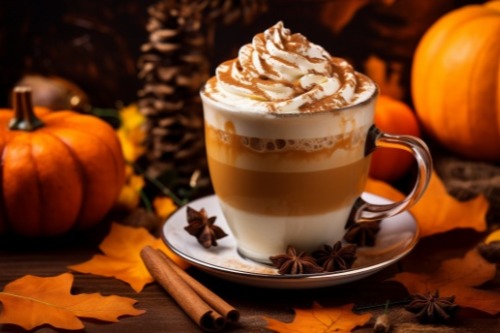
You might think that every fall, everywhere, forever, people go wild for pumpkin spice lattes—as if it’s been around since colonial times. In reality, Starbucks introduced the Pumpkin Spice Latte in 2003, and now it’s emblematic of autumn as if it was chiseled into our cultural DNA. Locals swear it’s an old-school tradition, but it’s only about two decades old. It’s on this list because it embodies how something new becomes deeply ingrained in the seasonal rhythm remarkably fast.
That craving for that cinnamon-nutmeg swirl in your latte seems timeless—but it’s a crafted tradition. Folks reminisce about “always having” PSLs on crisp mornings, even though it wasn’t even a glint in the marketing team’s eye until the early 2000s. It’s perfect for this list because it shows how marketing and nostalgia fuse to create instant cultural folklore. Plus, it’s fun to observe how we collectively act like PSLs have been around since the first American Thanksgiving.
3. “Game of Thrones” Watch Parties
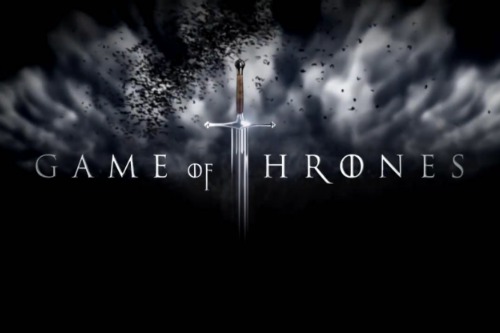
Walking into someone’s place during “Game of Thrones” was like stepping into a ritual cave—ice cream, beer, theories, laughter—it felt ancient. But HBO’s “Game of Thrones” premiered in 2011, and the watch party boom began almost immediately. Locals swear they’ve been doing it forever, especially around season finales. I’m including it because it highlights how blockbuster TV can birth communal traditions that feel like they belong in another era.
The pattern was so fast—people invited neighbors, friends, and coworkers to watch together, crafting themed snacks and costume ideas. Now it seems like nearly every historical family “always did” a GoT night, even though it began just over a decade ago. This one illustrates how pop culture can generate rituals as if they were inherited. And honestly, who can resist pretending these gatherings have biblical roots?
4. Flash Mob Proposals
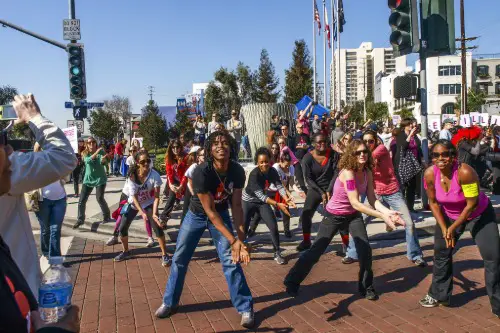
You’ve seen couples break into coordinated dance mid-street as if spontaneous romance erupted from ancient folklore. But the flash mob proposal trend didn’t take off until the 2000s—its heyday was around 2009 onward. Locals might swear such theatrical customs have always been part of urban romantic life. It makes the list because it shows how social media-savvy, choreographed declarations of love can masquerade as timeless gestures.
These flash mobs feel like coded rituals—music swells, dancers emerge, and someone gets down on one knee. It’s so cinematic that people assume it’s been a societal norm for ages. Including it underscores how modern tech and viral culture create rites that masquerade as traditions. And really, it’s downright cinematic in its instant myth-making.
5. National Coffee Day Celebrations
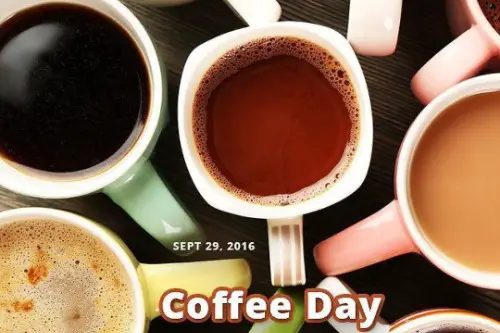
Every September 29th, coffee lovers act like the nation has always honored this day with enthusiastic reverence. But National Coffee Day in the U.S. became a modern observance in the early 2000s, pushed by coffee chains and media campaigns. Locals tend to treat it like a historic homage to caffeine, but it’s less than 25 years old. It fits here because it shows how commercial initiatives become beloved “holidays” that feel like they’ve been around forever.
You’ll find coffee shops offering specials, influencers posting latte art, and people tagging #NationalCoffeeDay like they’ve been doing it since daylight savings was invented. The familiarity is pure cultural shorthand, not ancient lineage. It earns its spot because it proves how quickly marketing calendars can become heartfelt rituals. And who doesn’t love a coffee-fueled excuse to celebrate?
6. Movember Mustaches

Every November, you see men sporting mustaches, pretending this hairy makeover is a longstanding tradition. The Movember movement—where men grow mustaches to raise awareness for men’s health—launched in 2003 in Australia and caught on globally within a few years. Even though people act like it’s rooted in decades of male fashion, it’s only about two decades old. It’s included because it’s a modern movement masquerading as a timeless rite—funny, meaningful, and well worth highlighting.
The mustache popping up in every office, coffee shop, and social feed in November feels so established it’s easy to forget it’s just twenty years young. It’s got the hallmarks of tradition—growing anticipation, community feel, and visual symbols—but it’s brand new compared to, say, the Fourth of July. It’s perfect for the list because it blends earnest causes with pop culture evolution. And, let’s be honest, it’s just fun to see everyone’s mustache game evolve each year.
7. Clap for Every Plane Flying Over at Night

In some neighborhoods, people clap when a plane flies over—like a spontaneous, communal salute to aviation history. But this quirky “tradition” actually blossomed from social media videos in the 2010s and turned into a trend. Locals swear it’s something people have done forever, but you’d be surprised how new it is. That’s why it’s on the list: a modern digital spark turned into a faux–folkloric ritual in real life.
You might genuinely believe it’s a decades-old rural custom, passed on from one generation to another. Yet it only took a few viral posts for entire streets to start applauding incoming aircraft. This one shows how online moments can morph into in-person rituals with utterly convincing nostalgia. Go ahead, clap away—you’re part of something weird, beautiful, and exactly two decades in the making.
8. Baby Gender Reveals

Couples unveiling pink or blue amid exploding confetti or cake—so many think it’s a generational family tradition. Gender reveal parties started trending around 2008–2010, and they’ve skyrocketed since. People act like it’s always been a pre-birth rite, even though it didn’t really exist in mainstream culture until the late 2000s. It makes the list because it reveals how intimate moments are turned into public spectacle—and quickly mistaken for ancestral practice.
Friends, family, and strangers gather, cameras ready, as confetti pops or colored smoke billows—like it’s a rite of passage handed down through generations. Yet, it’s only a bit over fifteen years old. This one gives insight into how social media encourages creating traditions for life’s milestones almost immediately. And it’s so flashy and emotional it’s no wonder people think it’s always been a thing.
9. Flash Sale Culture (e.g., Black Friday Pre-Midnight Launches)
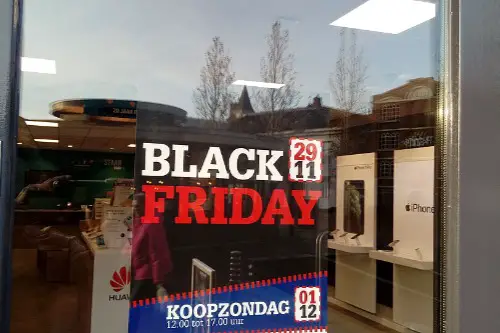
Waiting in line at midnight with strangers for deals? It feels like some age-old consumer rite tied to Thanksgiving. In truth, pre-midnight Black Friday doorbusters and flash sale culture exploded in the 2000s. Locals swear they’ve been doing it “forever,” but this was shaped by online retail trends and mall promotions only two decades ago. It’s here because it highlights how consumer behavior morphs into ritualistic practices that feel ancient.
We treat those thick lines and frantic early morning sprints as if they’re as American as apple pie. Yet, the craze is relatively young, born from marketing tactics and internet hype. Including it shows how habitual shopping behavior can become cultural mythology. Plus, it’s a powerful demonstration of how quickly we turn “new” into “norm.”
10. Urban Craft Beer Tastings
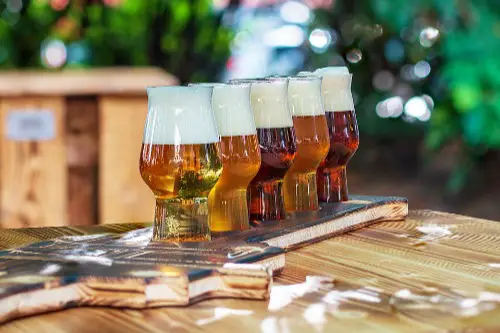
Locals in craft-beer hubs act like weekend tastings and brewery tours have been a historic custom passed through generations. But the explosion of craft beer culture in the U.S. really took off in the early 2000s as microbreweries boomed. Now everyone assumes small-batch tastings have been around since the Revolution. It’s included because it shows how modern trends get endowed with a sense of heritage far ahead of time.
Craft beer felt like a rediscovered artisanal tradition, though it was really re-invented by new breweries in the 21st century. People wax poetic about local breweries being “forever there,” even though many opened in the last 20 years. It’s perfect for the list because it encapsulates how rapid cultural shifts retroactively gain old-school status. And it’s delicious, too.
11. Photo-a-Day Challenges

Seeing friends posting “365-day photo challenges” makes it feel like we’ve always documented life that way. Yet the structured photo-a-day challenge trend took root on blogs and early Instagram around 2010. It feels like a timeless creative habit, but it’s only about fifteen years old. That’s why it belongs here—it’s a concrete example of how social media fosters habits that masquerade as longstanding.
People say, “I’ve always done a photo-a-day journal,” but it’s sibling to the rise of smartphones and filtered filters. Only with phones and platforms did documenting daily life in that stylized way become effortless. It’s here because it shows how our perception of habit splashes new phenomena with the patina of history. And hey, it makes scrolling your feed feel like flipping through an old scrapbook.
12. Marathon Day at Offices (e.g., Watching Sports Finals Together)

Gathering coworkers to watch March Madness or the Super Bowl like it’s an office tradition—it feels like everyone’s been doing it for decades. In reality, the corporate “watch party” culture ramped up in the 2000s with streaming and DVRs. Locals treat it like a timeless social glue at work, though the trend is not that old. It’s a great entry because it shows how tech-enabled viewing rituals transform the workplace into a community hub almost instantly.
Suddenly, conference rooms turned into communal viewing zones, complete with snacks and impromptu cheering. It’s such a natural communal moment that people forget when it didn’t exist. It’s included because it demonstrates how modern workflows and media access create new traditions with surprisingly deep roots in collective memory. And it’s just fun to bond over buzzer-beaters at your desk.
13. Social Media “Throwback Thursday”
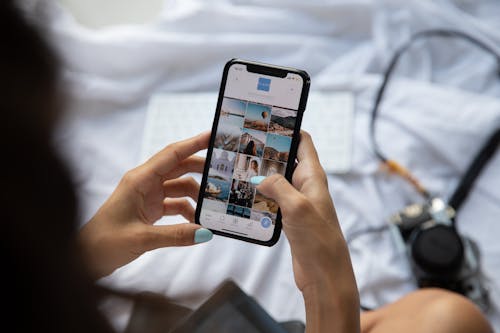
Every Thursday, people flood social media with old photos, joking that it’s always been a weekly ritual. But “Throwback Thursday” started as a hashtag trend around 2006 on Instagram and Twitter. Now, people behave as though Thursdays have always been for nostalgic glam shots from high school. It’s worth including because it’s a perfect example of a modern creation that feels “classic” thanks to its swift adoption and weekly repetition.
The charm lies in how every Thursday, someone’s aunt or your best friend digs up old vacation snaps like it’s part of the calendar. However, it’s only a little longer than a decade and a half old. This one’s on the list because it underlines how social media establishes traditions almost overnight, then they seem timeless. It’s proof that sometimes the “old–hat custom” is barely in its teenage years.
This post 13 U.S. Traditions That Locals Swear Are “Ancient” but Started in 2004 was first published on American Charm.


